Potrebujeme váš súhlas na využitie jednotlivých dát, aby sa vám okrem iného mohli ukazovať informácie týkajúce sa vašich záujmov. Súhlas udelíte kliknutím na tlačidlo „OK“.
ASTM E2412-10
Standard Practice for Condition Monitoring of Used Lubricants by Trend Analysis Using Fourier Transform Infrared (FT-IR) Spectrometry
Automaticky preložený názov:
Štandardná prax pre sledovanie stavu použité lubrikanty Trend analýzy pomocou Fourier Transform Infrared (FT-IR) spektrometria
NORMA vydaná dňa 1.5.2010
Informácie o norme:
Označenie normy: ASTM E2412-10
Poznámka: NEPLATNÁ
Dátum vydania normy: 1.5.2010
Kód tovaru: NS-45258
Počet strán: 25
Približná hmotnosť: 75 g (0.17 libier)
Krajina: Americká technická norma
Kategória: Technické normy ASTM
Kategórie - podobné normy:
Anotácia textu normy ASTM E2412-10 :
Keywords:
additive packages, base stock degradation, condition monitoring, contamination, Fourier transform infrared, FT-IR, fuel, glycol, infrared, IR, lubricating oils, nitration, oxidation, petroleum based extreme pressure lubricants, petroleum lubricants, polyol ester synthetic lubricants, soot, sulfates, trend analysis, water, Fourier-Transform infrared (FTIR) analysis, Used lubricating oils, ICS Number Code 75.100 (Lubricants, industrial oils and related products)
Doplňujúce informácie
| Significance and Use | ||||||||||||||||||||
|
Periodic sampling and analysis of lubricants have long been used as a means to determine overall machinery health. Atomic emission (AE) and atomic absorption (AA) spectroscopy are often employed for wear metal analysis (for example, Test Method D5185). A number of physical property tests complement wear metal analysis and are used to provide information on lubricant condition (for example, Test Methods D445, D2896, and D6304). Molecular analysis of lubricants and hydraulic fluids by FT-IR spectroscopy produces direct information on molecular species of interest, including additives, fluid breakdown products and external contaminants, and thus complements wear metal and other analyses used in a condition monitoring program (1,3-7). |
||||||||||||||||||||
| 1. Scope | ||||||||||||||||||||
|
1.1 This practice covers the use of FT-IR in monitoring additive depletion, contaminant buildup and base stock degradation in machinery lubricants, hydraulic fluids and other fluids used in normal machinery operation. Contaminants monitored include water, soot, ethylene glycol, fuels and incorrect oil. Oxidation, nitration and sulfonation of base stocks are monitored as evidence of degradation. The objective of this monitoring activity is to diagnose the operational condition of the machine based on fault conditions observed in the oil. Measurement and data interpretation parameters are presented to allow operators of different FT-IR spectrometers to compare results by employing the same techniques. 1.2 This practice is based on trending and distribution response analysis from mid-infrared absorption measurements. While calibration to generate physical concentration units may be possible, it is unnecessary or impractical in many cases. Warning or alarm limits (the point where maintenance action on a machine being monitored is recommended or required) can be determined through statistical analysis, history of the same or similar equipment, round robin tests or other methods in conjunction with correlation to equipment performance. These warning or alarm limits can be a fixed maximum or minimum value for comparison to a single measurement or can also be based on a rate of change of the response measured (1). This practice describes distributions but does not preclude using rate-of-change warnings and alarms. Note 1—It is not the intent of this practice to establish or recommend normal, cautionary, warning or alert limits for any machinery. Such limits should be established in conjunction with advice and guidance from the machinery manufacturer and maintenance group. 1.3 Spectra and distribution profiles presented herein are for illustrative purposes only and are not to be construed as representing or establishing lubricant or machinery guidelines. 1.4 This practice is designed as a fast, simple spectroscopic check for condition monitoring of in-service lubricants and can be used to assist in the determination of general machinery health through measurement of properties observable in the mid-infrared spectrum such as water, oil oxidation, and others as noted in 1.1. The infrared data generated by this practice is typically used in conjunction with other testing methods. For example, infrared spectroscopy cannot determine wear metal levels or any other type of elemental analysis. The practice as presented is not intended for the prediction of lubricant physical properties (for example, viscosity, total base number, total acid number, etc.). This practice is designed for monitoring in-service lubricants and can aid in the determination of general machinery health and is not designed for the analysis of lubricant composition, lubricant performance or additive package formulations. 1.5 The values stated in SI units are to be regarded as standard. No other units of measurement are included in this standard. 1.6 This standard does not purport to address all of the safety concerns, if any, associated with its use. It is the responsibility of the user of this standard to establish appropriate safety and health practices and determine the applicability of regulatory limitations prior to use. |
||||||||||||||||||||
| 2. Referenced Documents | ||||||||||||||||||||
|
Podobné normy:
Historická
15.4.2009
Historická
1.5.2014
Historická
1.12.2011
Historická
1.12.2011
Historická
15.6.2013
Historická
1.12.2011
Odporúčame:
Aktualizácia technických noriem
Chcete mať istotu, že používate len platné technické normy?
Ponúkame Vám riešenie, ktoré Vám zaistí mesačný prehľad o aktuálnosti noriem, ktoré používate.
Chcete vedieť viac informácií ? Pozrite sa na túto stránku.


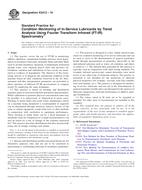
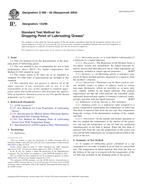 ASTM D566-02(2009)..
ASTM D566-02(2009)..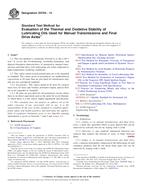 ASTM D5704-14
ASTM D5704-14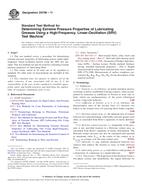 ASTM D5706-11
ASTM D5706-11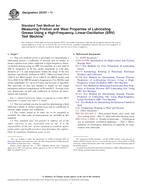 ASTM D5707-11
ASTM D5707-11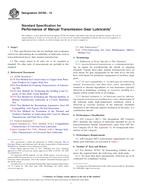 ASTM D5760-13
ASTM D5760-13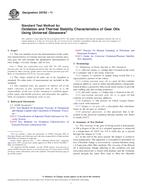 ASTM D5763-11
ASTM D5763-11
 Cookies
Cookies
